As soon as I’m in charge, there will be no more venting of clothes dryers through the roof. I think the roof is a stupid spot to terminate clothes dryer vents because it’s difficult to clean, and it’s a major contributor to ice dams. Clothes dryers should be vented through the side of the house, preferably within reach from the ground.
Ice Dam Contributor
When bath fans and clothes dryers vent through the roof, they melt a bunch of snow. After the snow melts below the vent, it’ll probably freeze again farther down on the roof. If this happens enough, an ice dam will form that’s large enough to cause roof leaks. The photo below shows an ice dam formed in the middle of the roof below a couple of bath fans, but clothes dryer exhaust more air, and it’s even warmer.
The roof is especially susceptible to roof leaks in areas like this because there is no ice and water shield installed this high up on the roof.
Tough to Clean
As I mentioned in my blog post about keeping your clothes dryer safe, the terminals for clothes dryers need to be cleaned on a regular basis. These terminals got covered with lint, causing the dampers to be stuck open.
Eventually, the terminal will get so filled with lint that airflow is obstructed, which will reduce the performance of the clothes dryer and could actually cause a fire. Cleaning the dryer terminal at old houses is usually a piece of cake; the lint can just be wiped off and pulled out by hand. The dryer terminal is easy to access at these houses because laundry rooms used to be installed in basements or on the first floor… but not anymore. For nearly the last twenty years, the standard for new two-story homes has been to install a laundry room on the second floor. When that happens, where does the dryer duct go? Through the roof, of course. Most of the time.
This arrangement will work fine at first, but just like dryer vents that go through the side of the house, the terminal will eventually get clogged with lint. The photos below are from a home with a badly clogged dryer vent terminal at the roof.
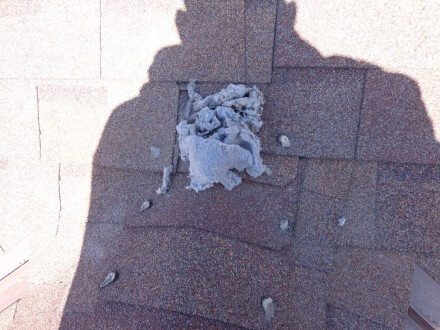


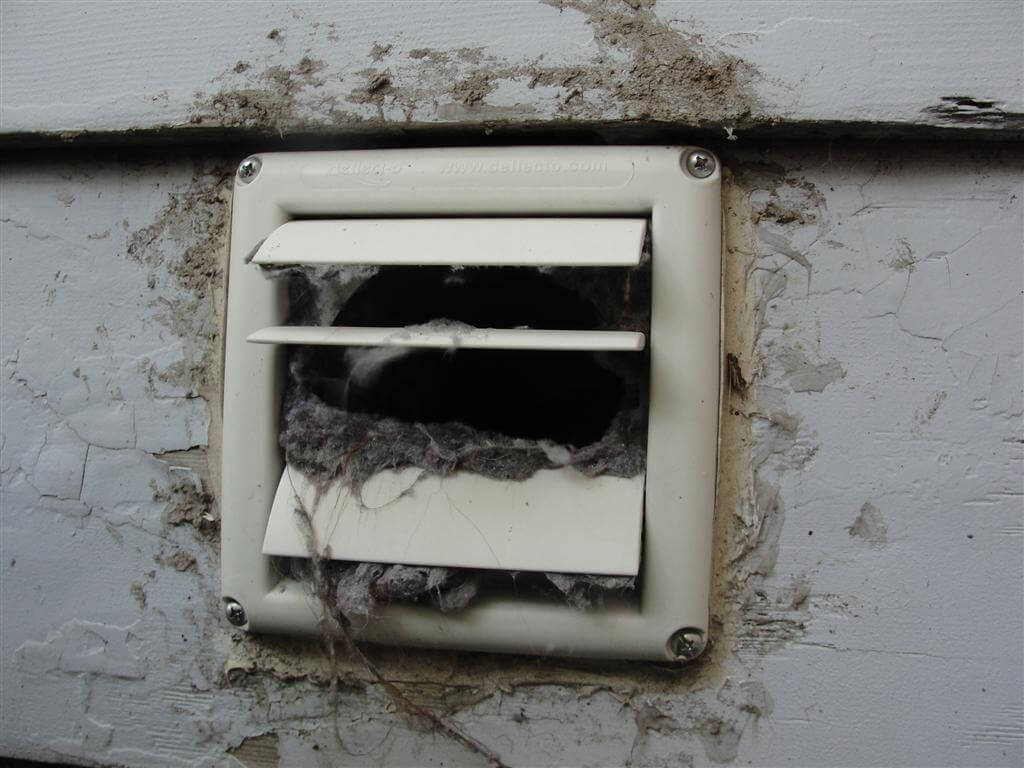
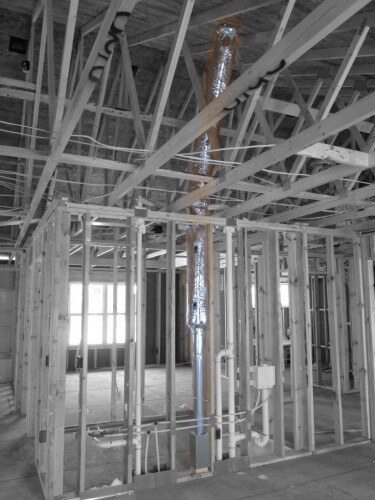
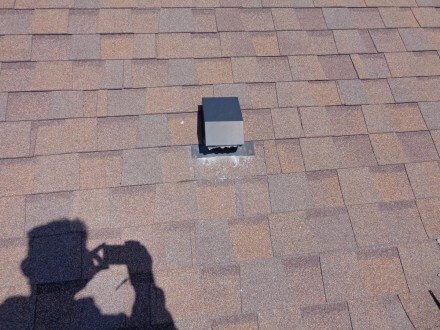
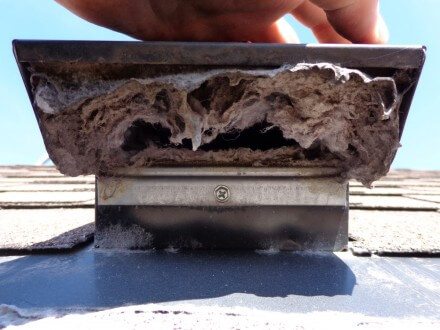
Brian A Dawson
June 25, 2014, 8:28 am
Great blog post. I am always amazed at the number of home inspectors that don’t give the dryer venting a second look let alone “inspect it”. Kudos to putting this topic out there for people to read. More homes are suffering from blocked and restricted dryer vents but few people know they need to provide periodic maintenance to keep the air moving properly. This not only saves money, but can save significant damage to your dryer and home.
level 380
August 3, 2014, 6:51 pm
Great advice re roof vent…. The other option is to use a dryer that doesn’t need venting at all. A condenser dryer doesn’t need outside air vent as they capture water in a container or a pipe out to a drain.
So if you have a roof vent and your dryer dies, think about changing the type of dryer!
Bob
August 12, 2014, 5:54 am
Also DO NOT terminate near AC condensing units !!
Andrew
January 30, 2024, 4:40 pm
I’m in Phoenix. LOL
George Benigno
January 31, 2024, 12:41 pm
Great article. Florida is notorious for this issue. Builders say homeowners want the laundry inside the house AC envelope which is usually not against an exterior wall. You need to create a homeowner manual on issues like this. As home inspectors you have seen it all by builders, contractors and DIY homeowners. Thanks